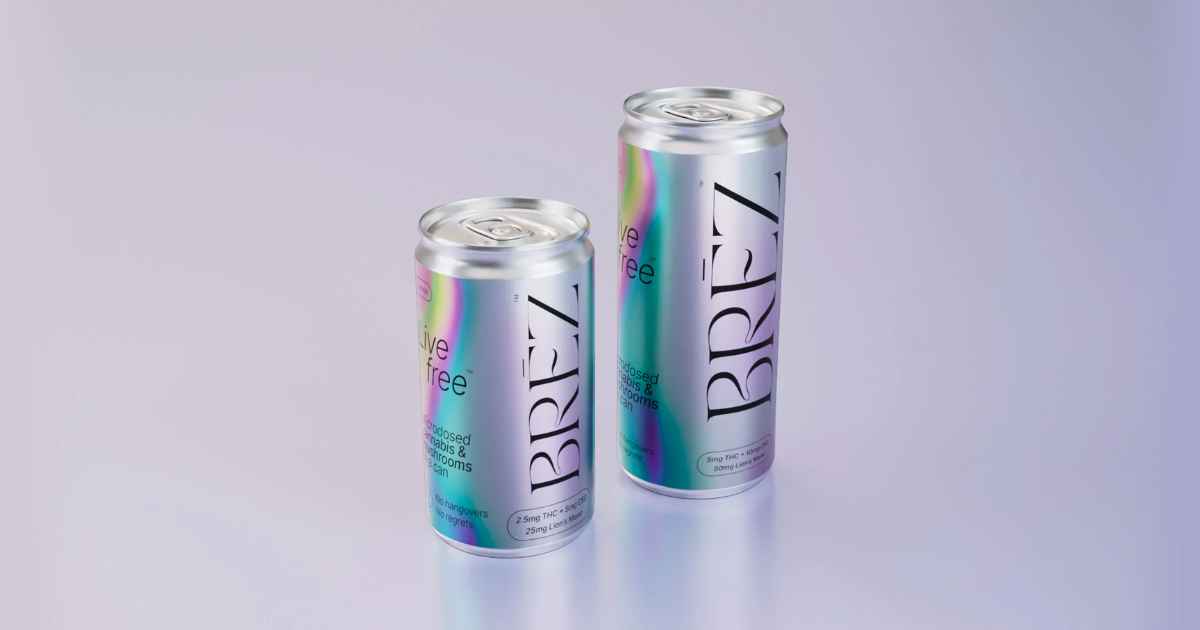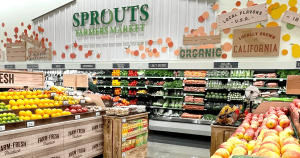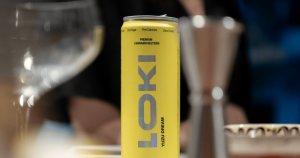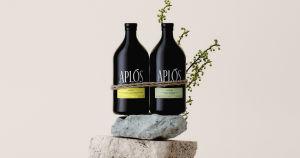Alcohol consumption continues to decline among younger generations, but that doesn’t mean we’re seeing a sober revolution. Instead, it’s a shift in preferences.
THC is increasingly becoming the buzz of choice, particularly in beverage form. And while this shift began with cannabis connoisseurs, it’s now seeping into more mainstream moments. THC-infused beverages are no longer a trend, but a category that’s here to stay.
The Market Signals Are Loud
The global cannabis beverage market was worth roughly $1.2 billion in 2023, and depending on who you ask, that figure could balloon to anywhere from $3.8 billion by 2030 to as much as $28.6 billion by 2033.
In the U.S., THC-infused beverage sales grew 15% year-over-year from Q1 2024 to Q1 2025, a rare bright spot in an otherwise cooling cannabis market. The majority of those sales (70% to 78%) are still tied to ready-to-drink (RTD) formats, although we have been tracking alternate ones, like single-serve packets.
The occasion-based appeal of these drinks is part of the draw. You can spend your day sipping a low-dose Cann in place of a hard seltzer, or bring a Cycling Frog to a BBQ instead of a six-pack. THC-infused non-alc beer is also starting to stake its claim, with brands like Tripleswitch and Easy Man brewing beverages dosed with anywhere from 3mg to 10mg of THC per can.
From Niche to Normalized
The idea that THC-infused beverages only appeal to seasoned cannabis users is outdated. Today, they’re showing up in the shopping carts of everyone from wellness-oriented Millennials to high-powered parents to retirees.
What they all have in common: they’re moderating their alcohol intake and seeking an alternative buzz. Lars Miller of Herbal Profiles describes his own evolution away from alcohol and toward THC-infused beverages: “I didn’t even intentionally quit drinking alcohol. I just realized after about two months that I hadn’t had any and, honestly, I never felt the need to go back.”
Given this increasing mainstream appeal, more retailers across the U.S. are stocking THC-infused beverages, from Total Wine & More to independent bottle shops like Cali Sober Market. That’s great news for the category, as traditional dispensaries tend to cater to high-potency consumers, not those seeking 5mg social tonics. By contrast, liquor and grocery stores are already optimized for selling age-gated, occasion-driven beverages.
The Blurry Legal Lines
Of course, normalization doesn’t mean clarity. While hemp-derived beverages with <0.3% THC by dry weight are federally legal under the 2018 Farm Bill, states are responding to this legal gray zone in dramatically different ways.
California has recently tried to ban THC-infused beverages from conventional retail. New Jersey briefly banned them too, before backpedaling under enforcement confusion. As it stands, THC-infused beverages are allowed, but only to those 21 years of age or older.
This fragmented patchwork has real business implications. In Massachusetts, a recent decision to prohibit THC-infused beverages in wine and spirits retailers caused a massive overnight sales drop for some vendors. Meanwhile, brands like Cann have reported 70% revenue growth after switching to hemp-derived formulations, a move that widened their DTC footprint while dodging some of the dispensary challenges.
Brands like BREZ are hedging their bets by releasing non-THC SKUs, incorporating ingredients like lion’s mane to appeal to a broader functional beverage audience and move their products via platforms like Amazon and TikTok Shop.
The Education Gap
Despite the momentum, THC-infused beverages still face a fundamental barrier: consumers don’t always understand what they are.
Most people don’t know the difference between hemp-derived delta-9 and marijuana-derived THC. Many can’t grasp the difference between 2.5mg and 10mg doses. Without guidance, consumers risk overdoing it, especially with higher-potency options that aren’t always clearly labeled.
There are signs of progress, however. Campaigns like New York State’s “Higher Education” initiative aim to educate consumers on safe use. Brands, too, are investing in storytelling that clarifies the occasion for these drinks. WYNK’s recent “Get Together” campaign showed THC seltzers at dinner parties and picnics, normalizing their role as an alcohol substitute, not a stoner stereotype.
Still, for many buyers, there’s no mental model for what to expect. As Dr. Ellicott Matthay of NYU Langone puts it: “When it comes to cannabis, what [labels] say can be nuanced—it can be delta-8, -9, or -10; we don’t know. It’s scary for a consumer that goes out thinking they’re getting a light buzz and ends up vomiting on the floor.”
What It All Means for Beverage Brands
This moment represents a clear inflection point. The market is growing, and consumers are curious. But education and regulation haven’t caught up to demand.
Opportunities for Brands:
- Product Line Expansion: There is ample room for non-alc brands to dip into THC-infused offerings, especially if they already lean into functional positioning.
- Retail Diversification: Success may lie outside of dispensaries. Liquor stores, grocery stores, and DTC channels can offer better environments for discovery and trial.
- Marketing with Clarity: This is still a word-of-mouth category. Clear and creative storytelling can go a long way in winning both hearts and carts.
Challenges to Watch:
- Dosing Transparency: Consumers need crystal-clear labeling and guidance, especially as products scale.
- Regulatory Whiplash: Brands need legal support to track and navigate shifting laws across state lines.
- Responsible Access: Even fans of high-dose products acknowledge they shouldn’t be available in every corner store fridge. Responsible placement and age-gating are key to industry longevity.
THC is Here to Stay
THC-infused beverages are quickly becoming a new kind of cultural fixture. But if the category wants to move all the way from trend to staple, it needs more than hype. It needs trust.
That means thoughtful formulation, strategic education, and regulatory advocacy that ensures these products are both accessible and safe. The brands that can deliver on all three? They’ll be the ones reshaping what it means to unwind.






